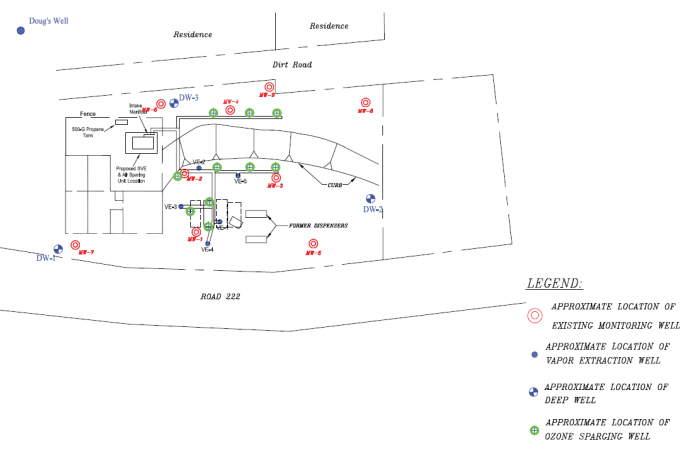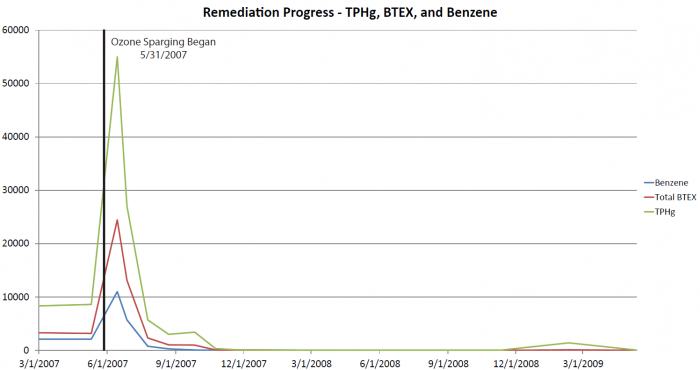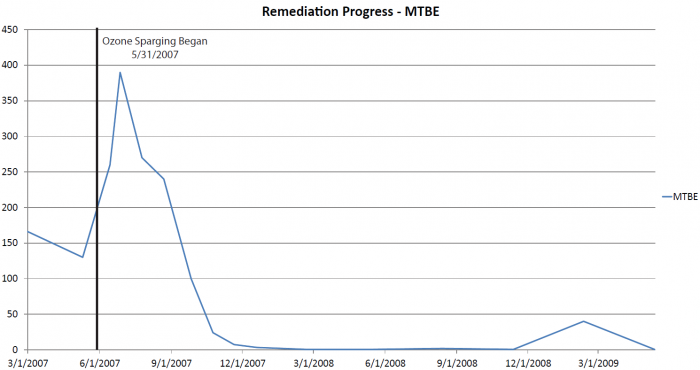Service Station Ground Water Treatment – North Fork, CA
Fuel release at a Service Station in North Fork, CA requires In-Situ Chemical Oxidation by way of Ozone to solve ground water and subsurface water quality issues.
Project Snapshot
Existing Conditions
- Depth to Groundwater: 7 ft to 30 ft
- Contaminates of Concern:
- Total Petroleum Hydrocarbons – Gasoline (TPHg)
- Benzene, Toluene, Ethylene, Xylene (BTEX)
- Methyl tert-butyl ether (MTBE)
Challenge:
After the discovery of the leak, all four of the USTs – one 10,000 gallon, one 6,000 gallon, and two 3,000 gallon – were removed along with the associated dispensers. The majority of the contamination consisted of TPHg, MTBE, and BTEX with historic highs of 160,000 ug/L, 2,600 ug/L, and 83,300 ug/L respectively.
Solution:
Ten ozone sparge wells were installed at the locations in Figure 1, with depths ranging from 20-30 ft. H2O Engineering, Inc. supplied an ozone sparge unit, Model OSU20-52, that generates 2.7 pounds of ozone per day. The system began operation on May 31, 2007.
Results:
Initially after startup there was an increase in concentration of groundwater contaminates, followed by a drastic reduction. Groundwater analysis has indicated that the ozone sparge unit has been effective. With substantial reduction in petroleum hydrocarbons in the groundwater, the system was shut off December 4, 2009. The California Regional Water Quality Control Board completed a site investigation and the site was granted closure in November of 2010.




